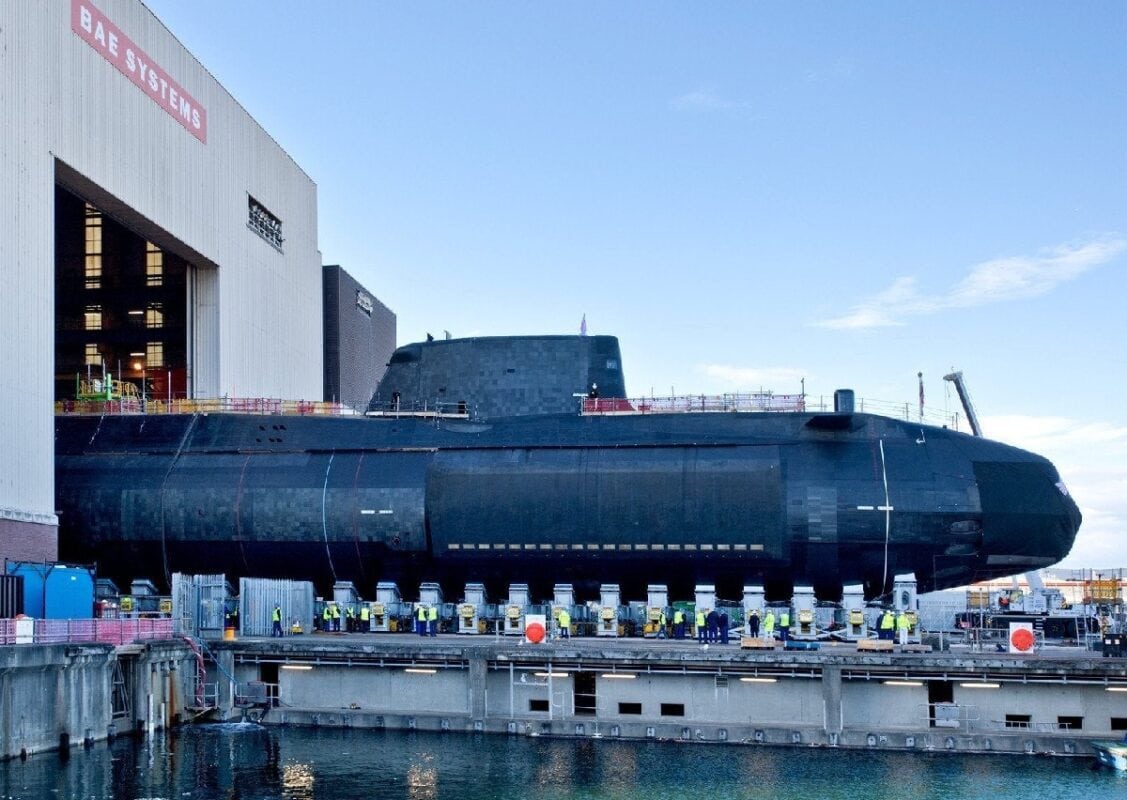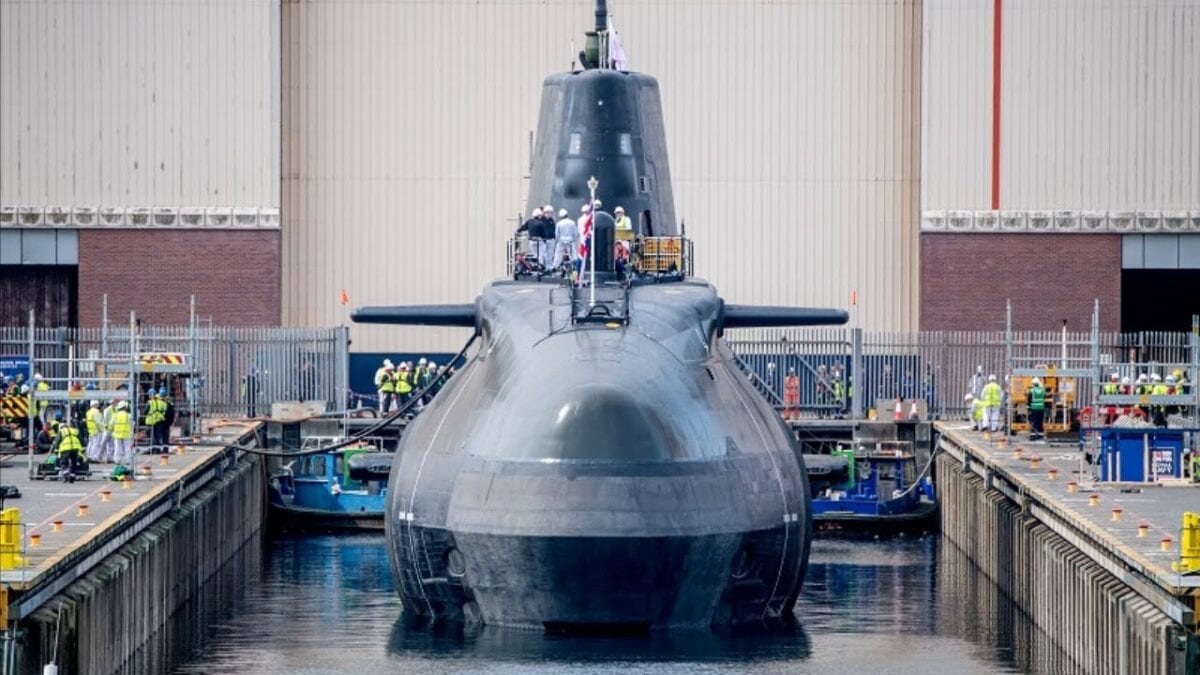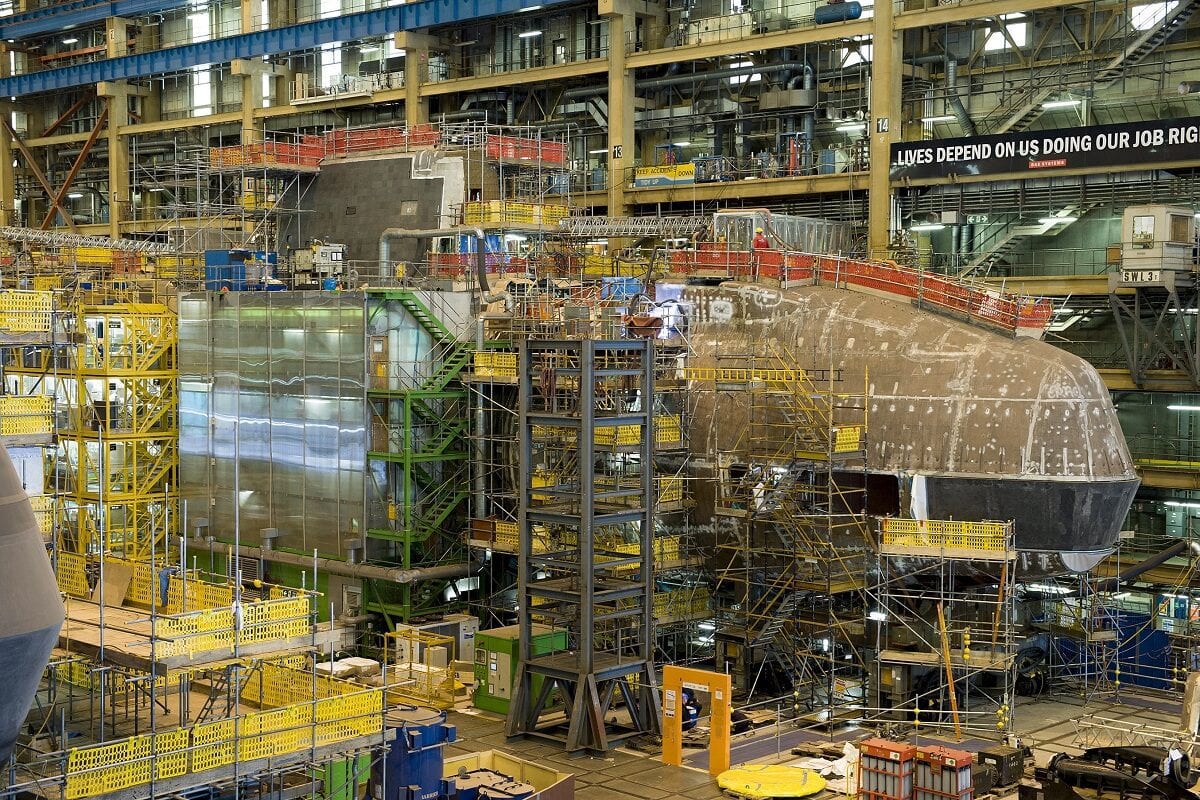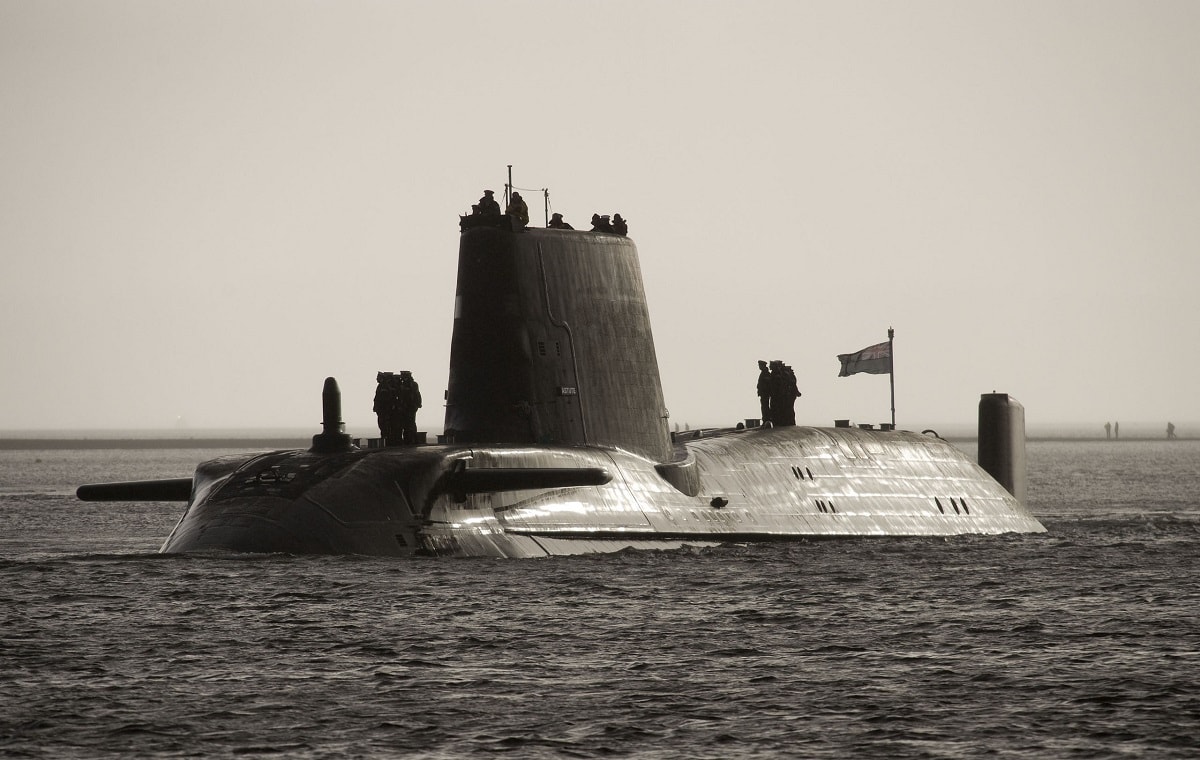The UK Ministry of Defence announced this week that Royal Australian Navy crews will train on the newly commissioned HMS Anson, as well as other Astute-class submarines, to help the submariners prepare for future operations. Under the “AUKUS pact,” London and Washington have agreed to help Canberra build and operate its own fleet of nuclear-propelled submarines by 2040.
Australia’s Defence Minister Richard Marles joined British Prime Minister Boris Johnson at the commissioning of the HMS Anson, the fifth Astute-class submarine, in the UK on Wednesday. The nuclear-powered vessel was commissioned at the Barrow-in-Furness yard of BAE Systems where the seven-strong Astute fleet is being built to replace aging Trafalgar-class boats.
During the ceremony, UK Defence Secretary Ben Wallace emphasized the importance of the deep defense ties between the UK and Australia, following the development of the trilateral AUKUS partnership working with the United States, which was represented by Defense Attaché Captain Leland.
“Not only have we progressed our defence planning but Minister Marles participated in the commissioning of our latest attack submarine, on which will Royal Australian Navy submariners will be embarked as we develop our shared capabilities in the years ahead,” Wallace told attendees at Wednesday’s ceremony.
“Built in a UK shipyard, HMS Anson demonstrates the very best of British industry, sustaining our world-leading sub-surface capabilities and underlining the UK’s readiness to contribute them to shared security, especially with our closest allies Australia and the United States under the AUKUS initiative,” he added
One of the most sophisticated underwater vessels ever built, HMS Anson represents £1.3 billion of UK investment. Capable of defending the UK’s interests at home and overseas, HMS Anson will be armed with up to 38 Spearfish Heavyweight Torpedoes, and Block V Tomahawk land attack missiles, able to tackle targets at a range of up to 1,000 miles.
Future of AUKUS
Wallace also suggested that the UK’s Royal Navy submarines could be deployed to patrol the Indo-Pacific until the Royal Australian Navy has the boats capable of taking on the role. That is one solution, as Australia will retire its aging Collins-class boats in the next decade and await its first nuclear-powered submarine, which may not be ready for service until at least 2040.
The training arrangement with the Royal Navy is now seen as the first tangible cooperation effort after Australia, Britain and the U.S. agreed to the pact to strengthen defense ties last year. The pact, known as AUKUS, is principally focused on Australia eventually building a fleet of nuclear submarines by using British and U.S. know-how.
However, some U.S. officials have expressed concern that the American shipyards are already stretched too thin to accommodate the building of the submarines for Australia. U.S. Navy Rear Adm. Scott Pappano, program executive officer for strategic submarines, addressed how AUKUS could impact the U.S. Navy’s own submarine efforts at a Mitchell Institute for Aerospace Studies conference in August.

Astute-class Submarine. Image: Creative Commons.

Image: BAE Systems
“If you are asking my opinion, if we were going to add additional submarine construction to our industrial base, that would be detrimental to us right now,” Admiral Pappano explained, and said that significant investment would be needed to provide “additional capacity, capability to go do that.” He then added, “I won’t speak for the UK, but I think that exists for both the US and the UK where we’re looking right now.”
Neighbors Aren’t Happy About AUKUS
Even as the Australian submarines are likely still more than a decade away, some of the nation’s neighbors are already calling for monitoring of the nuclear-powered vessels. The governments of Malaysia and Indonesia have expressed concerns that the future boats will travel near their territorial waters.
Jakarta has highlighted safety issues with the transportation and use of highly enriched uranium and the risk of it being diverted to weapons programs. Its proposal for stricter regulations around the sharing of nuclear material to fuel submarines is being supported by Malaysia.
In addition, Beijing has also made no secret of its opposition to Australia buying nuclear-powered submarines from the United States or United Kingdom under AUKUS, claiming it would be a dangerous precedent and a violation of the Treaty on the Non-Proliferation of Nuclear Weapons (NPT). In July, a report prepared by two Chinese think tanks claims the AUKUS agreement for Australia to acquire at least eight nuclear submarines from the U.S. and UK involves the “illegal transfer of weapons-grade nuclear materials” with enough uranium to make up to 80 bombs.

Astute Class submarine Audacious under construction at Barrow in Furness shipyard in Cumbria.
Audacious is the fourth of the seven Astute Class submarines being built for the Royal Navy.
The first two boats, HMS Astute and Ambush, are currently undergoing sea trials. The third boat, Artful, is reaching the final stages of her construction at Barrow shipyard. All three are to be based at Faslane on the Clyde.
The report, which was titled A Dangerous Conspiracy, alleges that AUKUS would “create an Anglo-Saxon circle” in the region, and called for all three countries to immediately halt the program.
“The nuclear submarine co-operation of the three countries seriously violates the purpose of the Treaty on the Non-Proliferation of Nuclear Weapons, directly violates the Statute of the International Atomic Energy Agency, impacts the international nuclear non-proliferation system, undermines the global strategic stability and balance, induces a nuclear submarine arms race, and endangers the peace and stability of the Asia-Pacific region,” China Arms Control and Disarmament Association chairman Zhang Yan said, according to an English translation of remarks at a press conference.
A Senior Editor for 1945, Peter Suciu is a Michigan-based writer who has contributed to more than four dozen magazines, newspapers, and websites with over 3,000 published pieces over a twenty-year career in journalism. He regularly writes about military hardware, firearms history, cybersecurity, and international affairs. Peter is also a Contributing Writer for Forbes. You can follow him on Twitter: @PeterSuciu.

